for 循环用于针对集合中的每个元素都一个代码块,而while 循环不断地运行,直到指定的条件不满足为止。
7.2.1 使用while 循环
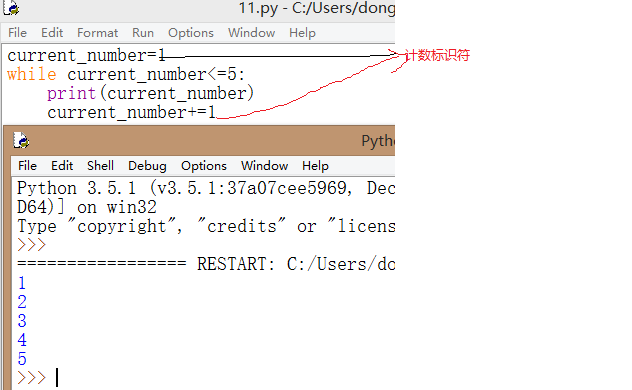
7.2.2 让用户选择何时退出
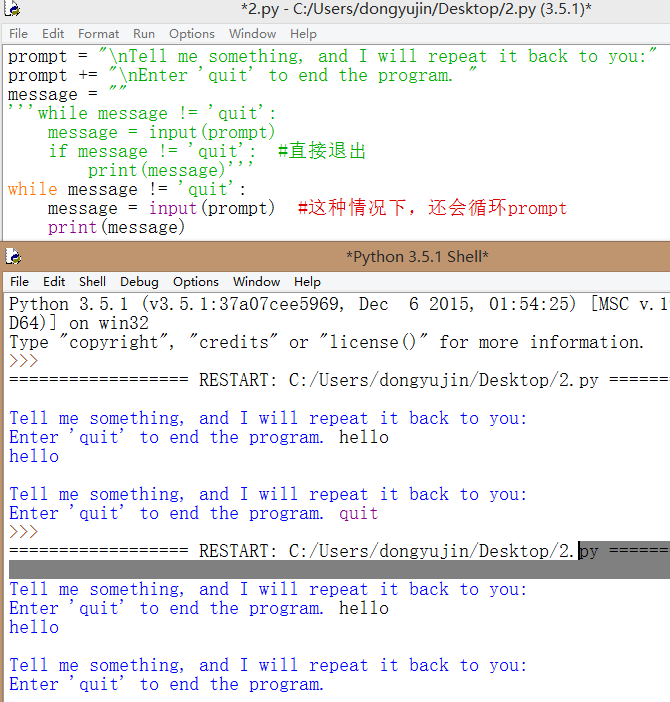
7.2.3 使用标志
在要求很多条件都满足才继续运行的程序中,可定义一个变量,用于判断整个程序是否处于活动状态。这个变量被称为标志
可让程序在标志 为True 时继续运行,并在任何事件导致标志的值为False 时让程序停止运行
在while 语句中就只需检查一个条件——标志的当前值是否为True ,并将所有测试(是 否发生了应将标志设置为False 的事件)都放在其他地方,从而让程序变得更为整洁,标志命名为(可给它指定任何名称)
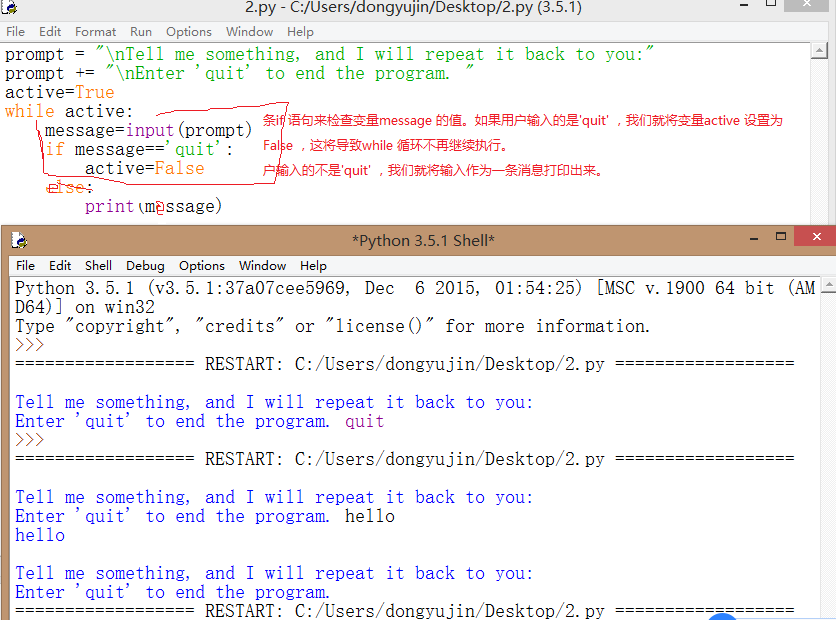
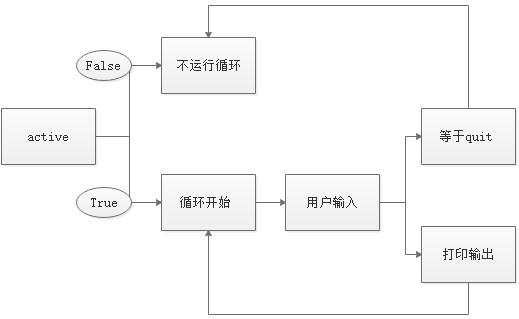
7.2.4 使用break 退出循环
,可使用break 语句来退出遍历列表或字典的for 循环
prompt = " Tell me something, and I will repeat it back to you:" prompt += " Enter 'quit' to end the program. " while True: #以while True 打头的循环将不断运行,直到遇到break 语句 city=input(prompt) if city=='quit': break else: print("I'd love to go to " + city.title() + "!")
结果
Tell me something, and I will repeat it back to you: Enter 'quit' to end the program. sarch I'd love to go to Sarch! Tell me something, and I will repeat it back to you: Enter 'quit' to end the program. quit >>>
7.2.5 在循环中使用continue
current_number = 0 while current_number < 10: current_number += 1 #们以步长1的方式往上数 if current_number % 2 == 0: #求模运算为0,继续返回while continue print(current_number)
1 3 5 7 9 >>>
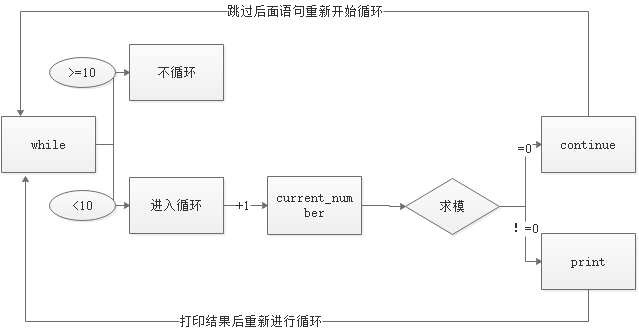
当我们输入信息时,程序运行;当我们输入退出条件的时候,程序是不执行continue后面的语句了,但是程序继续运行,从新询问我们,并没有停止运行,
7.2.6 避免无限循环
如果程序陷入无限循环,可按Ctrl+ C,也可关闭显示程序输出的终端窗口。